LEC Expansion Teams: What the Future Holds for European LoL
Updated On: October 23, 2025 by Aaron Connolly
LEC Expansion Teams: Fast Facts
Right now, the League of Legends EMEA Championship has 10 teams. Expansion plans could bump that up to 12 sometime soon.
LEC bosses have already said expansion is “inevitable,” but nobody can pin down exactly when it’ll happen.
Timeline of LEC Expansion
The LEC has been growing ever since it started as the EU LCS. We kicked things off with 8 teams battling it out in a relegation system.
Later, the league switched to the current 10-team franchise setup.
Past expansion milestones:
- Original EU LCS: 8 teams, relegation system
- Current LEC: 10 permanent partner teams
- Proposed future: 12 teams by mid-2020s
In 2023, rumors swirled about the 10 LEC partners meeting Riot Games to talk about adding two new teams. That said, LEC officials haven’t given any solid timetable.
According to recent interviews, expansion could land “in five years or ten years.” They’re just waiting for the stars to align.
Format Changes with Expansion
Bringing in new teams would force some big structural changes in the LEC. Expect longer regular seasons and probably new playoff formats.
Current 2025 format includes:
- Split system with regional play
- Group stages leading up to playoffs
- Top three teams go to Worlds
With 12 teams, we’d probably get longer group stages or extra rounds. The LEC already shook things up in 2025 to make things more competitive and fun for fans.
Every new team means more matches each split. That’s more content for viewers, but it also makes scheduling trickier if they want to keep broadcast quality up.
Current Team Count and Future Plans
The LEC features 10 permanent partner orgs from Europe, the Middle East, and Africa. Some big names here—G2 Esports and Fnatic, for example.
2025 Summer Split groups include:
- Movistar Koi
- Karmine Corp
- GIANTX
- Vitality
- Natus Vincere (new addition)
Some potential expansion teams from regional leagues have built their fanbases from the ground up. Karmine Corp, for example, already proved they can draw a crowd before joining the main league.
LEC bosses look at a bunch of things before expanding: league partners, how teams are performing, and the market. They want new teams to actually bring something to the table—not just make the league crowded.
Warning: Reports once pointed to 2023 for expansion, but that obviously didn’t happen. Official timelines are still up in the air.
Motivations Behind LEC Expansion
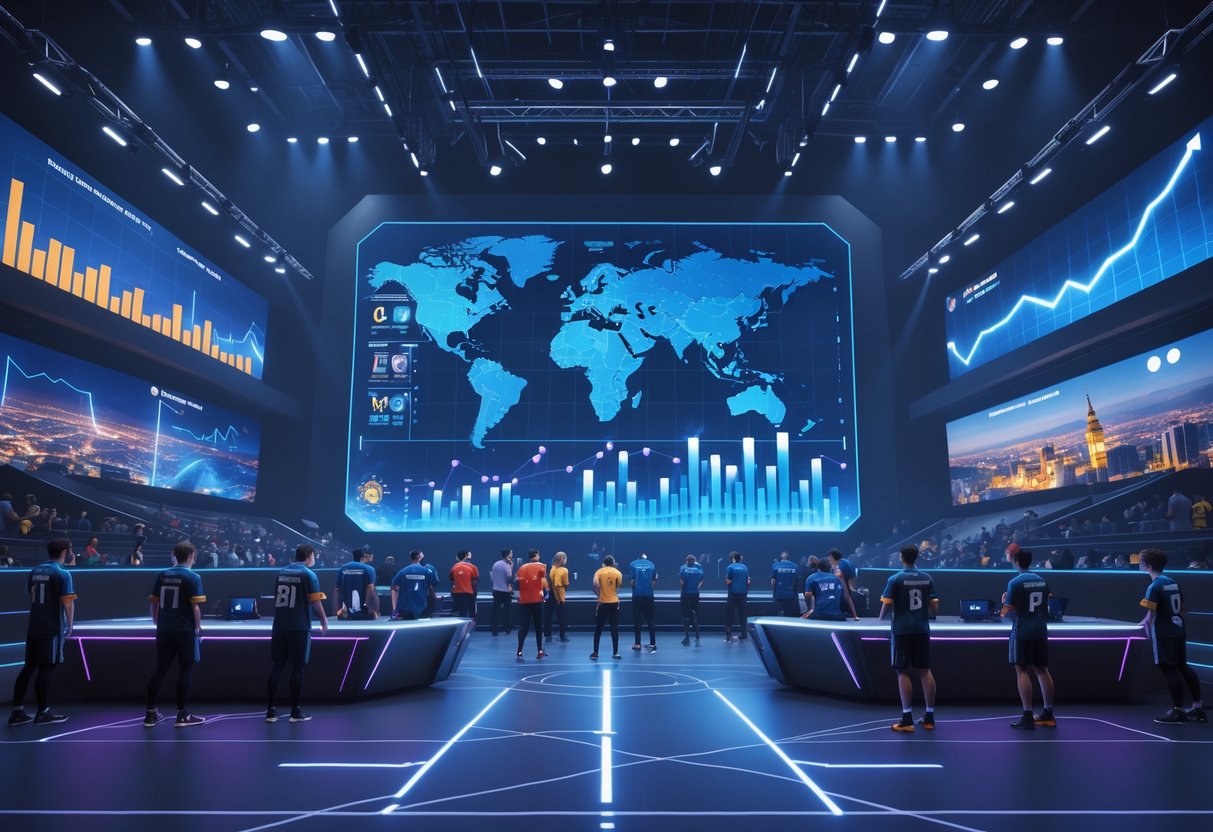
The push for LEC expansion comes down to three things: growing European talent, boosting the region’s international standing, and keeping up with fan demand in new communities.
Talent Pool and Player Opportunities
With only 10 teams, there just aren’t enough spots for all the rising talent in Europe’s regional leagues. ERLs like the LFL and Superliga keep churning out skilled players, but most of them get stuck on the outside looking in.
Teams like Karmine Corp have built huge followings and developed players like Nisqy before he made it into the LEC. Giants Gaming and other ERL orgs keep fielding talent that could compete at the top.
If the league expands, that’s 20 new starting spots across two teams. Suddenly ERL stars and academy players get more chances to prove themselves.
Right now, regional league players hit a bottleneck. Only a few break into the LEC each year—even if they’re killing it. Crownshot’s story going from regional play to LEC shows there’s a lot of talent just waiting for a shot.
More teams would also mean more coaching staff, analysts, and support jobs. That makes the whole ecosystem healthier, not just focused on the top academies.
International Competitiveness
Europe’s results on the world stage have slipped compared to regions with bigger leagues. The LPL runs with 17 teams, so their players get way more high-level experience.
China’s bigger format means they can build several world-class rosters every year. Their teams usually show up strong at international events, probably because of all that extra domestic competition.
BIG and other ERL orgs have shown they can put together solid rosters. Bringing them into the LEC would push the overall skill level up and give current teams more of a challenge.
More teams might also mean extra international tournament slots. If more LEC squads qualify for global events, Europe could actually improve on the big stage.
The current 10-team setup sometimes leads to predictable matches. Expansion would shake things up, forcing teams to adapt and develop new strategies.
Community and Fan Growth
Karmine Corp alone brings in massive French viewership—sometimes even outpacing established LEC brands. Their fans represent a huge, mostly untapped audience.
Regional fans can feel left out when their favorite ERL teams never make it to the LEC. Spanish Giants Gaming fans or German BIG supporters don’t have much to cheer for at the top.
Expansion would tap into these existing fanbases instead of trying to build new ones from scratch. Each new team brings its own social media following and local ties.
More teams mean more content—rivalries, storylines, and regional pride. Imagine French vs. German matches or Nordic rivalries. That stuff creates drama and keeps fans invested.
ERL viewership numbers say it all. KCorp’s games often pull in audiences similar to mid-tier LEC matches, so bringing them up would probably boost overall league numbers.
The Process of LEC Team Expansion

The LEC follows a pretty strict process for adding new teams. They look at business chops and competitive plans, not just who’s got the deepest pockets.
Teams have to show a solid ownership structure, and they work with existing league partners during approval.
Criteria for Admission
The LEC reviews every potential team closely before giving the green light. We see them looking at several key areas.
Ownership structure is the first thing on the list. Teams need stable finances and clear management.
Business planning is next. Orgs have to lay out their revenue models, sponsorship plans, and how they’ll stick around for the long haul.
Community engagement matters too. The league checks out social media, content strategies, and how teams interact with fans.
Competitive history and planning show what the team’s done in esports. They look at past results, player development, and coaching setups.
Brand identity is important. Teams need to stand out in Europe but still fit with LEC values.
Franchise Spot Acquisition
Teams can’t just buy into the LEC on the open market. It’s a controlled process with a lot of moving parts.
Partnership requirements mean new teams have to get approval from current LEC orgs. Existing teams have a big say in who joins.
Riot Games oversight makes sure everyone meets league standards. Riot checks for financial stability, competitive integrity, and market fit.
Slot availability depends on official expansion news. The LEC’s stuck with 10 teams since 2015, but talks about moving to 12 are ongoing.
Investment levels are no joke. Teams need to be ready for big financial commitments—player salaries, facilities, and running costs, not just entry fees.
The whole buy-in process takes a lot of negotiation between interested parties, and the LEC has the final word.
Role of the ERLs
Regional leagues are the main proving ground for orgs hoping to join the LEC. ERLs give teams a place to show what they can do.
The LFL and other regional leagues let teams build their resumes through consistent results and professional setups.
Talent development in ERLs shows off coaching and player growth. LEC reviewers look at how orgs spot and nurture up-and-coming talent.
Operational experience in regional leagues really helps. Teams prove they can handle everything from broadcasts to fan engagement.
Winning in regional leagues doesn’t guarantee a LEC spot, but it definitely helps teams make their case.
Regional Leagues and Talent Development
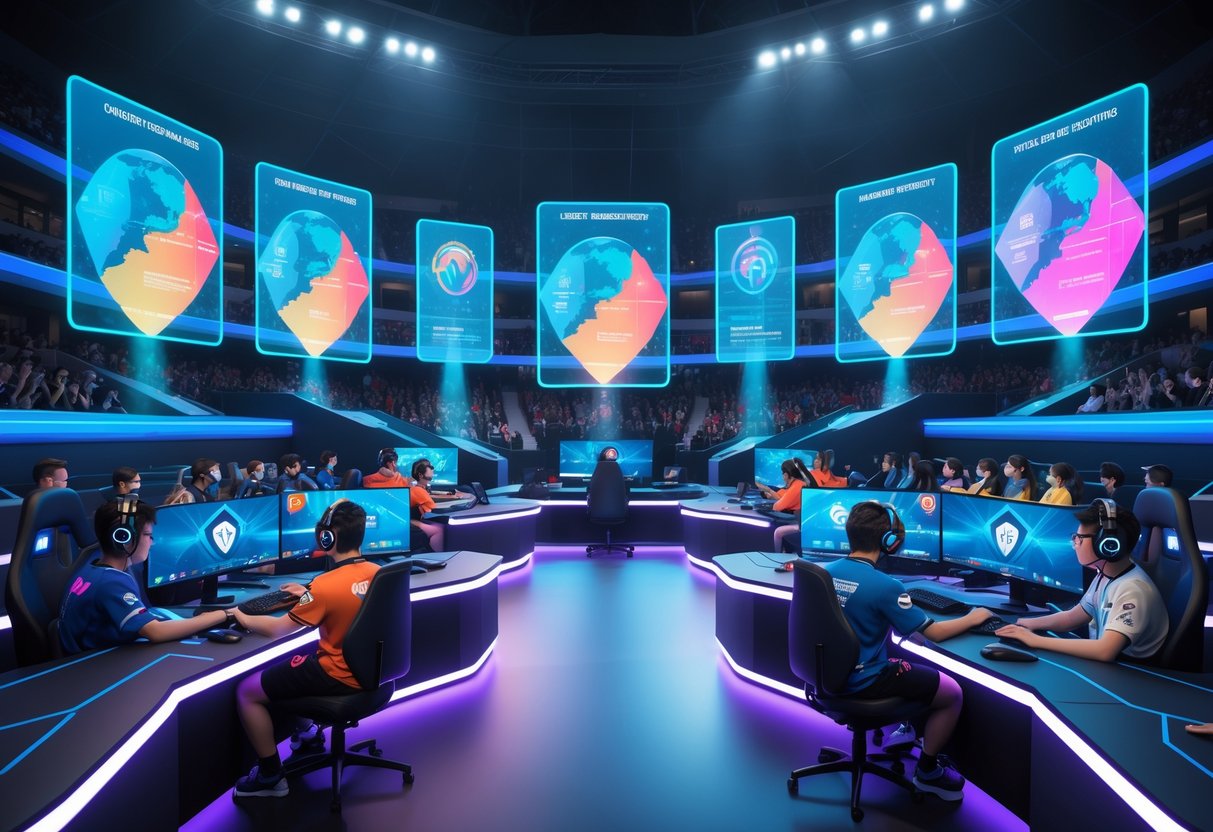
European Regional Leagues (ERLs) really drive talent development for the LEC. Leagues like the LFL keep producing future stars and give players a clear shot at the top.
Importance of ERLs
ERLs act as the main pipeline for players aiming to go pro. These leagues create a clear system that feeds talent right into the LEC.
Regional leagues offer some real perks:
- Consistent competition for new talent
- Easier to join than the LEC
- Strong regional identity and fan bases
- Cheaper way for orgs to develop players
The 2025 restructure leans into regionalization to balance competition. Local talent gets to grow while staying connected to their roots.
A lot of current LEC players started out in regional leagues. Playing in ERLs gives them pro experience without the pressure of the main stage.
Notable ERL Success Stories
Karmine Corp is probably the best-known ERL success from the LFL. Their huge fanbase and big wins show what regional leagues can do for orgs.
The French org built their brand by dominating the LFL. Their fans and pro infrastructure make them a top pick for LEC expansion.
BIG from the German league is another example. These orgs prove regional leagues can foster both strong teams and sustainable business models.
Several LEC players came up through regional competitions. That really proves the ERL system works for developing talent.
Integration with LEC
The new structure ties ERLs and the main LEC closer together. Regional leagues now have better ways to feed into the top league.
Key integration changes:
- Smoother promotion/relegation paths
- Shared resources between levels
- Better scheduling across regions
- Stronger scouting networks
Teams from ERLs often challenge LEC squads in events like EMEA Masters. These tournaments help regional orgs take the next step.
This integration keeps a steady flow of competitive teams ready for LEC expansion. ERLs really act as the testing ground for future LEC orgs.
Potential and Recent Expansion Teams

A handful of orgs from the European Regional Leagues (ERL) look like strong picks for LEC expansion. Karmine Corp leads the pack with their wild fan engagement, while BIG and Giants Gaming bring solid infrastructure and competitive chops.
Karmine Corp’s Journey
Karmine Corp has become the most talked-about expansion candidate thanks to their explosive rise in the French league. Their fans regularly pack arenas, bringing energy that rivals—or even beats—what we see from traditional LEC teams.
The org built its name in League of Legends’ ERL scene and keeps performing well at European Masters. Their social media following even beats some current LEC partners.
Key strengths include:
- Organic fan growth—no need for huge marketing budgets
- Strong presence in the French market
- Real competitive results in ERL play
Karmine Corp isn’t just about League of Legends—they’re active in multiple esports. That kind of diversification shows the business stability Riot Games wants in permanent partners.
If they get the nod, they’d bring a fresh vibe to the LEC. French fans have been waiting a long time for a team that really represents them at the top.
BIG’s Ambitions
Berlin International Gaming (BIG) brings a ton of German market know-how and a well-established esports infrastructure to the table. They’ve competed for years in titles like Counter-Strike and League of Legends.
BIG’s League of Legends division keeps getting better in the ERL system. They know the business side of LEC partnership and already meet a lot of the professional standards Riot wants.
Their expansion case centers on:
- German market access and sponsorship potential
- Existing relationships with major brands
- Professional team management structure
The German esports market still feels like untapped gold for the LEC. BIG might be the team to finally bridge that gap. Their experience in other big leagues shows they’re in it for the long haul.
BIG keeps pouring resources into coaching staff and player development. That focus on infrastructure matches what successful LEC teams need.
Giants Gaming’s Aspirations
Giants Gaming brings Spanish market representation and a wealth of esports experience. They’ve been in League of Legends for almost a decade, moving through different competitive levels.
The Spanish organization connects deeply with its home audience. Their content and fan engagement work really well, and Giants gets the entertainment factor that modern esports demands.
Giants offers the LEC:
- Established Spanish fanbase and market connections
- Long-term commitment to League of Legends
- Experience managing professional rosters
Their previous time in the LEC gives them a unique edge. Giants knows the investment and operational standards needed, which could help them integrate quickly if they get picked.
Spain stands out as one of Europe’s biggest gaming markets. Giants could open up major viewership and sponsorship opportunities for the league.
LEC’s Current Teams and Powerhouses
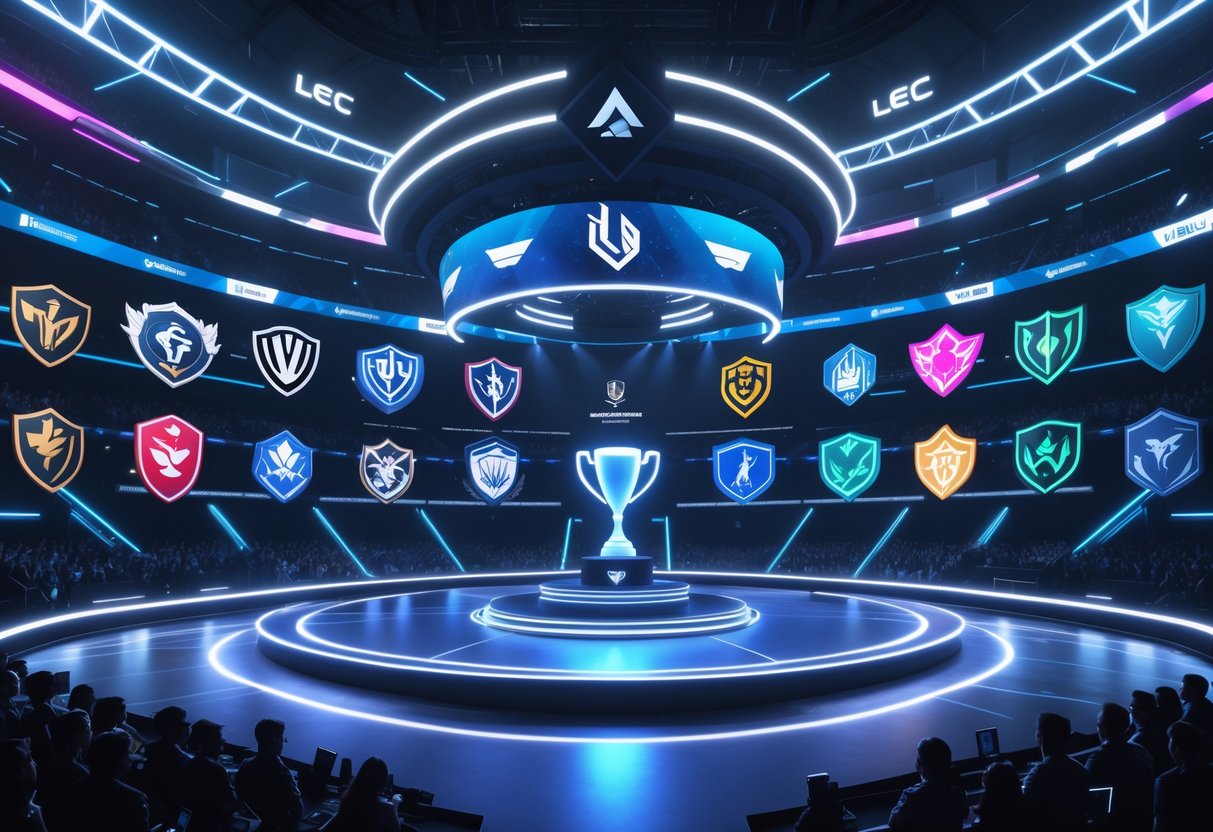
The LEC features legendary organizations that have shaped European League of Legends for years. These teams bring massive fan bases, championship experience, and the resources to compete at the highest level.
MAD Lions and Movistar KOI
MAD Lions burst onto the scene as one of Europe’s most exciting teams. They stunned everyone by reaching the MSI finals in 2021 with a young roster.
The Spanish organization built its name by developing fresh talent. Their aggressive playstyle and fearless approach to international matches earned respect across the region.
MAD Lions’ Key Strengths:
- Strong talent development programs
- Aggressive early-game strategies
- Experienced coaching staff
- Solid financial backing
Movistar KOI brings another big Spanish presence to the league. They blend traditional sports investment with esports expertise.
KOI adds major resources and marketing muscle to the LEC. Their partnership with Movistar gives them stability that many expansion teams still dream of.
The team works hard on building a strong brand across different platforms. They put a lot into content creation and fan engagement, not just competitive results.
G2 Esports’ Role
G2 Esports stands as Europe’s most successful League of Legends organization. They’ve taken home multiple LEC titles and reached the 2019 Worlds finals.
Based in Berlin, G2 sets the bar for European excellence. Their 2019 MSI win still stands as one of Europe’s biggest international moments.
- 9 LEC/EU LCS titles
- 2019 MSI champions
- 2019 Worlds finalists
- Multiple Rift Rivals victories
G2 attracts top-tier talent from all over. They’re famous for bold roster moves and headline-grabbing signings.
Their success puts pressure on every expansion team to measure up. G2’s steady performance proves what’s possible with real investment and sharp management.
The organization also crushes it at content creation and social media. Their fan base is one of the biggest in European esports.
Fnatic’s Legacy
Fnatic carries the deepest history in European League of Legends. They won the very first World Championship back in 2011.
The British organization has made it to multiple Worlds finals. Their orange and black colors are basically a symbol of European League of Legends.
Fnatic’s Historic Achievements:
- 2011 World Champions
- 7 LEC/EU LCS titles
- 2018 Worlds finalists
- Multiple European championships across different eras
Fnatic’s roster has included legends like xPeke, Rekkles, and Caps. These players helped shape European League of Legends culture.
The team’s experience in building championship squads offers valuable lessons. They know what it takes to compete at the highest international level.
Their academy system has produced a ton of pros. Fnatic Rising stands out as a model for developing homegrown talent.
Even with some recent struggles, Fnatic remains one of Europe’s most recognizable brands. Their legacy keeps attracting players and sponsors to the LEC.
Impact of Expansion on Competition Structure
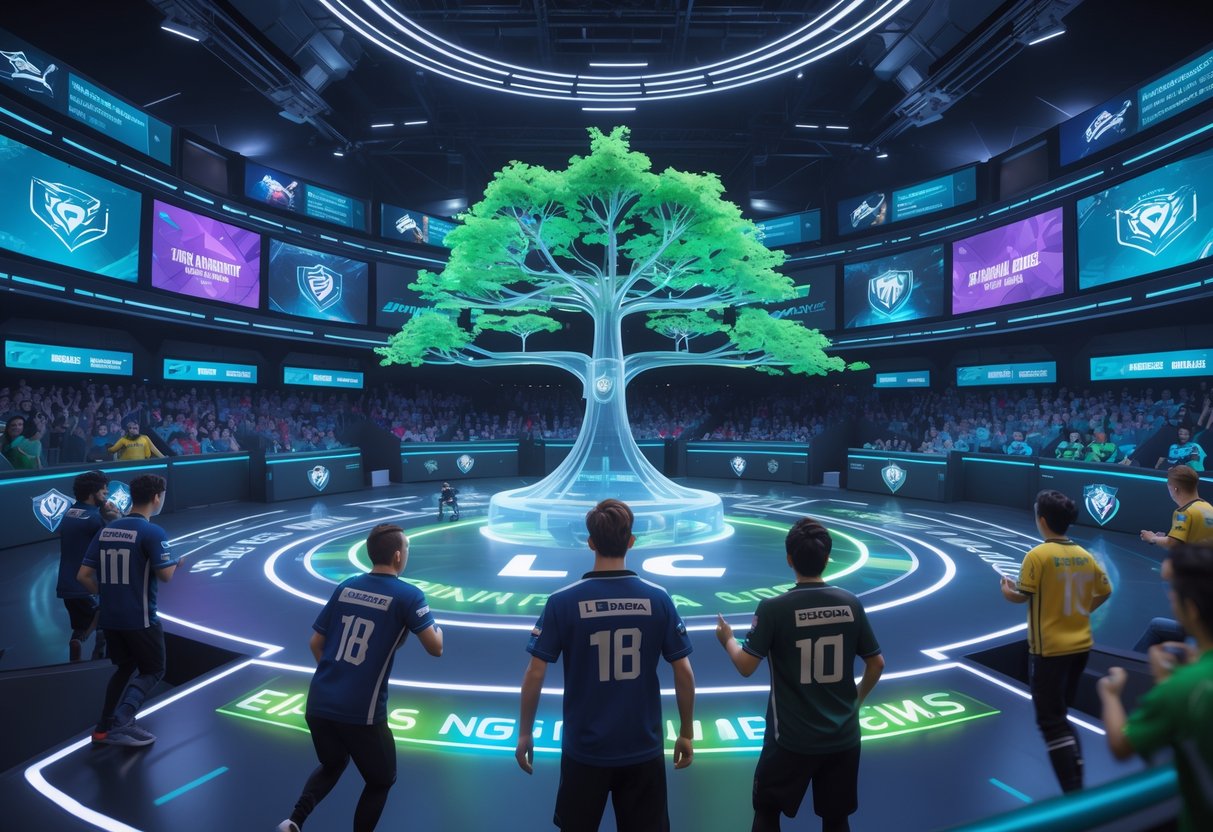
Adding new teams to the League of Legends EMEA Championship shakes up match organization and the way teams fight for international spots. The structure changes everything from regular season formats to playoff brackets and qualifying paths for tournaments like MSI.
Split and Group Stage Modifications
If the LEC expands past its current 10 teams, the regular season format needs tweaking to fit more matches. Right now, the double round-robin works well for 10 teams, giving each team 18 games over nine weeks.
Expansion to 12 teams brings some big choices:
- Single round-robin format (11 games per team)
- Extended season with double round-robin (22 games per team)
- Group stage system splitting teams into two groups
The group stage setup offers the most flexibility. Teams could split into two groups of six, playing more games within their group and some cross-group matches for rankings.
Scheduling matches gets trickier with extra teams. Weekend broadcasts need more time slots or might spill into weekdays. This shift could change viewership habits and needs careful planning with other big leagues like the LPL to avoid clashes.
Broadcasting costs go up with more matches. But more teams also mean new local fanbases and sponsorship opportunities to help cover those expenses.
Playoffs Adjustment
A bigger regular season naturally means the playoff format has to change. Right now, six teams make playoffs, but with expansion, that number would probably rise.
A 12-team league could look like this:
- Top 8 teams make playoffs
- First-round byes for the top 4
- Best-of-three matches early on
- Best-of-five for semifinals and finals
This longer playoff run gives mid-tier teams a real shot. Teams finishing 5th-8th get playoff experience instead of going home after the regular split.
Playoff scheduling becomes a balancing act with more games. The current three-week playoff schedule might stretch to four weeks, which could push back the next split or leave less time for international prep.
With more teams getting playoff experience, the region should get stronger. High-pressure matches help LEC teams level up before facing international opponents.
Pathways to International Tournaments
Expansion changes how many LEC teams go to MSI and Worlds. Right now, the LEC sends its champ to MSI and three teams to Worlds (two through playoffs, one via regional qualifier).
MSI qualification stays the same—just the Spring split winner goes. Still, a tougher regular season could send a more battle-hardened team.
Worlds qualification could grow if Riot adds more regional slots. The LEC might get a fourth Worlds spot, similar to what the LPL earned after strong showings.
Play-in tournaments at Worlds could see more LEC teams. A fourth LEC squad would probably start in play-ins, giving them a shot to prove themselves before the main event.
The new Global Revenue Pool in Riot’s updated model rewards international success. More international spots mean better revenue sharing across LEC teams, making expansion more appealing.
Regional qualifier tournaments get even more intense with extra teams. The system already produces fierce matches among teams that just missed direct Worlds qualification. More teams would make these qualifiers even more crucial.
Opportunities and Challenges for Players
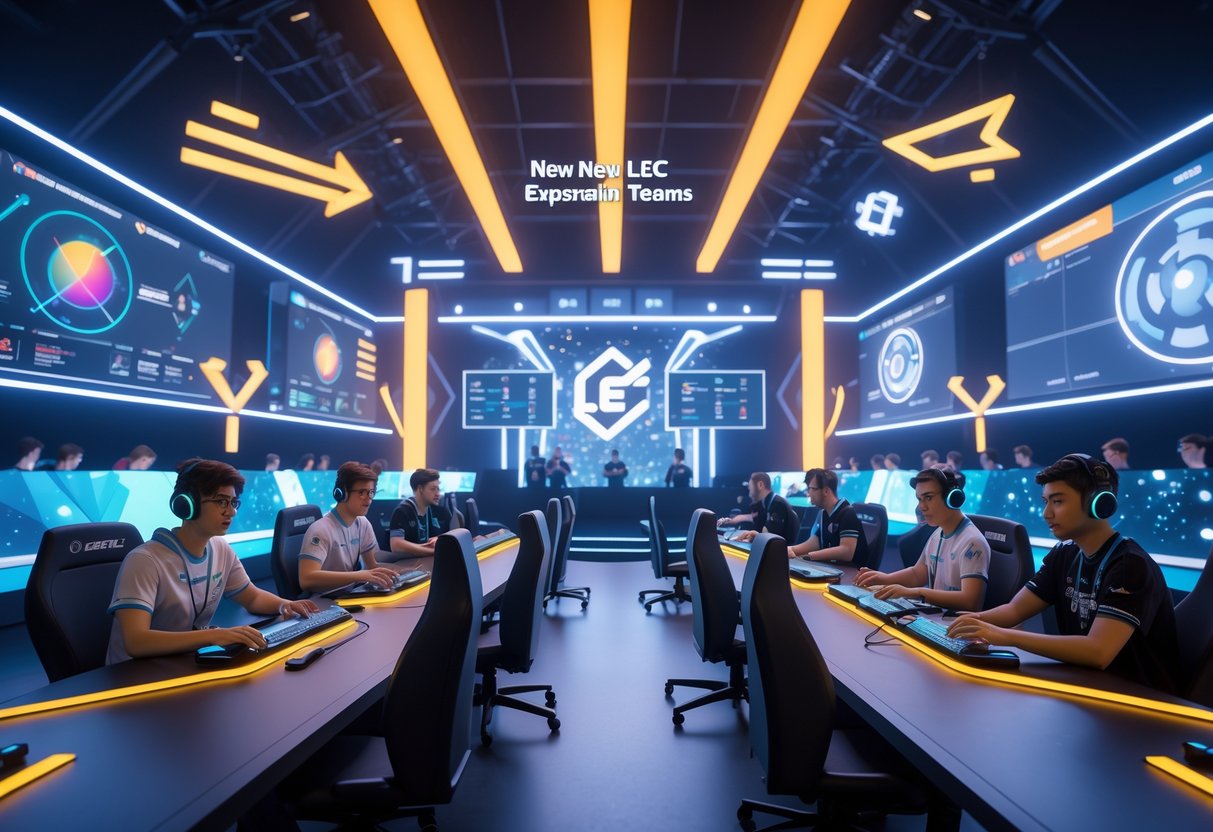
LEC expansion opens up new paths for talented players stuck in regional leagues. It also gives veterans another shot at competitive opportunities. Of course, more roster spots could spread talent thinner and make competition for places even tougher.
Spotlight on Rising Stars
The European Regional Leagues (ERLs) are packed with players waiting for their LEC moment. Players like Crownshot have shown real skill in these secondary leagues but can’t always break into the main stage.
Current ERL standouts include:
- Mid laners dominating French and German leagues
- ADC players with top KDA stats over several splits
- Support players bringing new champion picks and strategies
Expansion teams would probably scout ERLs hard. These organizations need to build entire rosters fast and often go for hungry, motivated players instead of pricey veterans.
Tip: Keep an eye on ERL playoffs to spot tomorrow’s LEC stars before they make it big.
But the jump isn’t easy. ERL players face much tougher competition and more pressure in the LEC. Many promising talents need time to get comfortable on stage and adapt to international-level play.
New teams also mean more coaching gigs. Rising players can grow with these organizations instead of fighting for scraps on established teams with set cultures.
Veteran Players Finding Homes
Experienced players sometimes get pushed out as teams look for fresh faces. Veterans like Nisqy have proven themselves but may struggle to land spots on LEC teams focused on long-term projects.
Expansion teams need leaders and in-game brains right away. These organizations can’t afford slow rebuilds, so experienced players become valuable for:
- Shot-calling and macro play
- Mentoring younger teammates
- Handling pressure
- Delivering steady performance in big matches
Heads up: Veterans might have to accept lower salaries with new teams that have tighter budgets.
There’s a risk here. Players joining expansion teams put their reputations on the line if the orgs flop, either competitively or financially. A failed stint could end a career early.
But if things go well, veterans can shape the team culture from day one. They might even extend their careers by becoming the foundation of a new squad.
Potential for International Success
MAD Lions showed that newer orgs can break through internationally pretty fast. Their Worlds run proved that fresh teams with hungry rosters can challenge the old guard.
Expansion teams bring some real advantages for international play:
- Creative strategies not tied to old habits
- Flexible player development that adapts to the meta
- Strong motivation to prove themselves
- Less pressure can mean more creative risk-taking
These teams often invest in coaching and infrastructure to catch up fast. Players get access to new training methods and analysis that older teams sometimes overlook.
But building international experience takes time. New teams need a few splits to develop teamwork and the stage presence needed for Worlds or MSI.
Honestly, most expansion teams struggle at first and need 2-3 splits to hit playoffs.
Players joining expansion teams take a gamble on the org’s growth. If it works, their careers can skyrocket. If not, it could hurt their shot at top-tier teams later.
European expansion also deepens the talent pool, which should help the region do better against powerhouses like Korea and China.
Fan Experience and Regional Identity
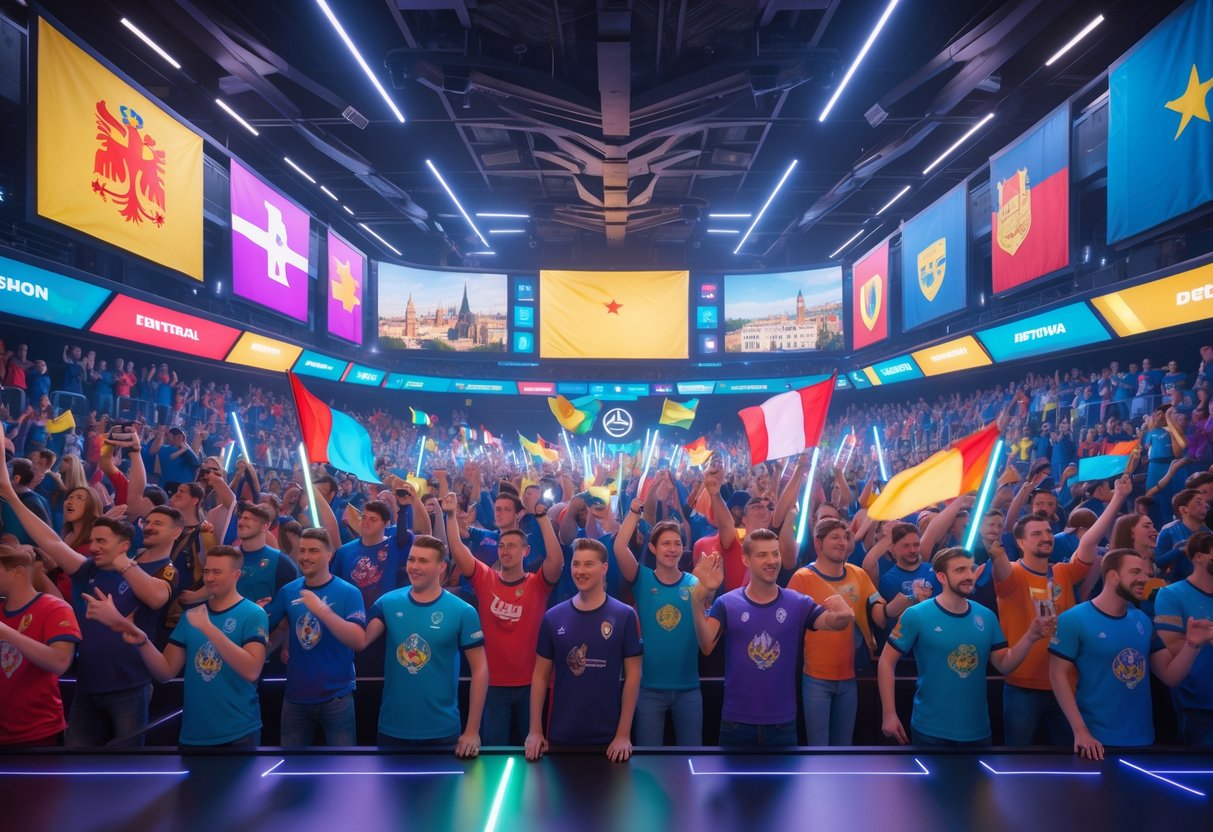
LEC expansion brings in new fans from all over EMEA. That means fresh communities and more regional pride as representation grows.
Growing the European League of Legends Audience
By expanding beyond the usual European borders, the LEC opens doors for millions of new fans. The Turkish Championship League (TCL) and Arabian League (AL) viewers already add to the EMEA scene.
Riot Games keeps working to turn casual League players into competitive viewers. They put in-game missions in the client that reward watching LEC matches during tournament weekends.
The numbers hint at real growth. MENA and CIS regions have huge League of Legends player bases. Many already follow international events but never had a local team to root for at the top level.
Tip: Follow your regional league’s social media to keep up with local storylines that could feed into LEC qualification. Leagues like the LFL often showcase rising talent before they hit the main stage.
Fan Communities and New Rivalries
Expansion teams always shake up the scene by bringing their own fanbases. Karmine Corp is a great example—when they joined, their wildly passionate French fans completely changed the vibe at LEC matches.
New rivalries just sort of happen as teams compete. Turkish fans, for instance, love backing their squads against the big European names, and those clashes always seem to pull in more viewers than the usual regional matchups.
Regional leagues now act as year-round feeder systems. The LFL, Spanish SuperLiga, and others keep fans invested even when the LEC’s on break.
People follow rising stars as they move from their home leagues to the international stage.
Social media makes these connections even stronger. Discord servers and Reddit threads pop up for specific regions inside the bigger EMEA community.
Fans end up rooting for local teams first, then rally behind their regional reps in the LEC.
Regional Loyalty and Team Culture
When teams from new regions join the LEC, they bring their cultural identity with them. Turkish squads show up with their own chants and celebrations, while Middle Eastern teams introduce fresh takes on player development and management.
Language diversity really adds something to the broadcast. Now, the LEC offers streams in more languages, so more fans feel at home. Local commentators give context that global streams just can’t match.
Player representation is huge. When fans see someone from their own country at the top, they get way more invested. It validates their local scene and inspires the next wave of players.
Team facilities and training setups reflect these regional differences. Some orgs focus on individual skill, others on team play. That variety keeps tactics unpredictable and makes games more exciting.
Expansion lets fans keep their regional identity while still being part of the global League of Legends ecosystem.
Economic and Organisational Implications

LEC expansion changes how investments and revenue get distributed across European League of Legends. New franchised teams mean fresh money coming in, but also force existing orgs to share revenue with more competitors.
Investment and Sponsorship Trends
New LEC slots attract huge investment. In the past, teams paid tens of millions of euros to join. Giants Gaming coming back to top competition shows that even traditional sports orgs see esports franchises as long-term goldmines.
The investment landscape looks nothing like the old EU LCS days. Back then, slots went for less than €1 million. Now, franchised spots cost a premium because they guarantee revenue and eliminate relegation fears.
Right now, investors care about:
- Revenue sharing from Riot Games
- Brand exposure at international events
- Merch sales and content creation
- Partnerships with both gaming and non-gaming sponsors
Sponsorships get a boost from expansion because more teams mean more inventory and more audience segments. Of course, more competition could mean less value per individual deal.
Big brands see LEC partnerships as a must for reaching younger fans. Giants Gaming, for example, uses its traditional sports background to pull in sponsors who want a foot in both sports and gaming.
Franchising and Revenue Distribution
Riot’s franchising model brings financial stability, but splitting revenue among more teams always causes tension. Right now, LEC orgs get guaranteed income from broadcast rights, merch, and digital partnerships.
Revenue distribution headaches include:
- Broadcast revenue: Fixed pools split more ways
- Digital item sales: Shared cuts from in-game content
- Prize pools: Same total, more teams dividing it
- Sponsorship: Possible dilution as more teams chase deals
Existing teams end up with smaller slices as new orgs join. That’s a tough sell, especially when the economy’s shaky and everyone’s fighting to keep their current revenue.
Riot has tweaked its revenue-sharing deals over time. They’ve rolled out better digital merch and improved broadcast terms to help teams adjust to expansion.
Long-term Sustainability
Financial sustainability drives every LEC expansion conversation. Riot wants an environment where teams, players, and the league can all grow without burning out on spending.
The expansion pace really depends on the overall health of esports. In 2023, global financial struggles made orgs focus on short-term survival instead of long-term bets.
Things that matter for sustainability:
- Operating costs: Training, salaries, staff
- Competitive balance: Making sure new teams can keep up without overspending
- Market saturation: Not flooding fans with too many matches
Expansion actually opens more doors for up-and-coming players. More LEC spots mean more ways for ERL talent to break into the top league.
Riot seems set on expanding slowly, putting existing team health first. Any new slots will come with strict financial requirements and checks for sustainability.
Comparisons with Other Leagues
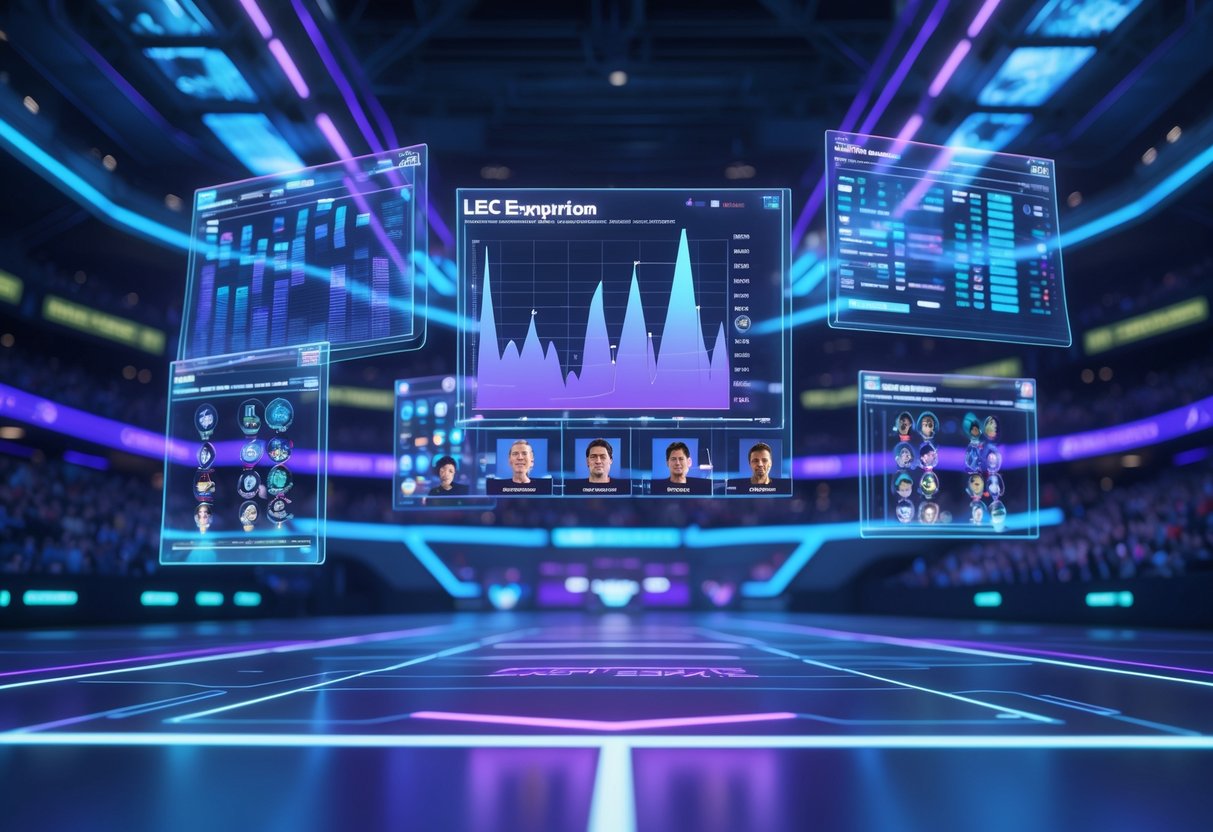
If you look at other esports leagues, you can see pretty clearly what works and what doesn’t when it comes to expanding team slots. The Chinese LPL, for example, runs with 17 teams and somehow makes it work—new top-tier rosters pop up every year.
Insights from the LPL
The League of Legends Pro League (LPL) stands out as the only major region with more than 10 teams. With 17, the league feels super competitive—fresh talent gets chances that wouldn’t exist in smaller leagues.
A bigger league means more players can go pro. Guys who’d never get a shot elsewhere find a home with up-and-coming orgs.
The LPL stretches matches over longer seasons. Fans get more games, and teams have time to build rivalries and stories.
Some obvious upsides:
- Higher competition
- More play styles
- More rookie debuts
- More matches, more viewers
Their international success at MSI and Worlds shows expansion can actually make a region stronger. Extra domestic competition preps teams for the global stage.
Lessons from Global Esports Structures
Most top esports leagues try to balance team count with competitive integrity. League of Legends regions usually stop at 10-12 teams to keep the quality high.
The League of Legends EMEA Championship already grew by adding MENA, CIS, and Turkey. Riot’s open to expansion, but only when the timing feels right.
Other leagues teach us:
- Scheduling gets complicated fast with more than 10 teams
- Bigger leagues need bigger sponsor and broadcast deals
- You need enough talent to fill all those rosters
- Fan engagement gets trickier with more teams
Leagues that expand too quickly without enough infrastructure always seem to struggle. Gradual, careful growth is the way to go—think about broadcast schedules, venues, and the economy before adding more teams.
European regional leagues already churn out loads of talent. It feels like the infrastructure’s there to support 12 LEC teams without lowering the bar.
The Future of the LEC: What’s Next?
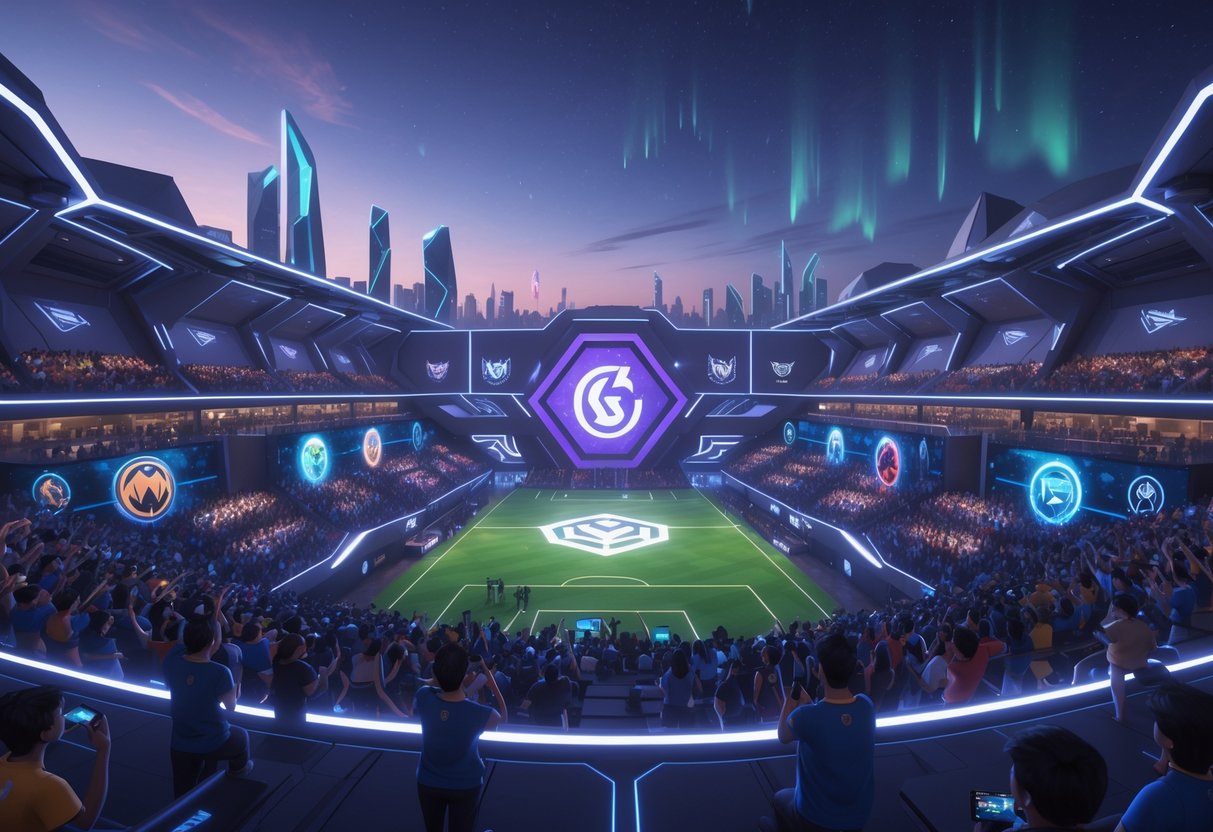
The LEC’s future looks like it’ll be all about new teams, stronger talent pipelines through regional leagues, and format tweaks that make things more competitive. The goal? More chances for players and better viewing for fans.
Predictions for Further Expansion
Everyone in the industry seems to agree—LEC expansion is just a matter of time. The league runs with 10 teams now, but there’s a lot of pressure to open more slots.
What people expect:
- 2026-2027: Most likely for new teams to join
- 12-14 teams: Feels like the sweet spot
- More regional diversity: Especially for underrepresented areas
The roadshow starting in 2025 will test how fans react in different countries. Riot plans to take a couple matches to local venues during Spring Split.
If fans show up, expansion could happen even sooner. There’s growing interest from orgs outside the usual esports hotspots.
Why expand?
- Viewership keeps climbing
- Sponsors want broader reach
- Regional leagues have loads of talent
- Revenue sharing is improving
The LEC’s EMEA structure makes growth possible. Regional leagues like the ERLs already produce championship-level players who need better paths to the top.
Talent Development Pathways
Regional leagues are the main pipeline for LEC talent. The ERL system sends promising players up, but it still needs work.
How it works now:
- National leagues – Entry step
- ERLs – Regional champs
- EMEA Masters – Cross-regional tourneys
- LEC – The big leagues
Expect more investment in ERL infrastructure soon. Teams want better support and clearer promotions.
There’s still a big gap between regional and LEC play. New projects aim to close it by:
- Expanding academy programs
- Developing more regional coaches
- Setting up scrims between ERLs and LEC teams
- Giving more broadcast time to up-and-coming talent
Regional league salaries need to go up if they want to keep their best players. Too many leave for other games or regions because the pay just isn’t enough.
Potential Structural Reforms
Format changes are a hot topic with team owners and Riot. The current best-of-one regular season gets a lot of criticism for being shallow.
Ideas on the table:
- Fewer, higher-stakes regular season games
- More best-of-threes for key matches
- Playoff formats with double elimination
- Regional qualifiers mixed in
The spring/summer split setup could change a lot. Teams want every game to matter, not just a long slog of regular matches.
Broadcast changes are also coming:
- More languages
- Interactive features for viewers
- Regional broadcast partners
- Better co-streaming options
International access stays a priority. Reforms aim to give more teams a shot at global events.
Pilot programs are already running. The 2025 season will test lots of these ideas before bigger changes roll out.
Revenue sharing also needs an overhaul to fit more teams. The system has to keep things balanced and fair as the league grows.
Frequently Asked Questions
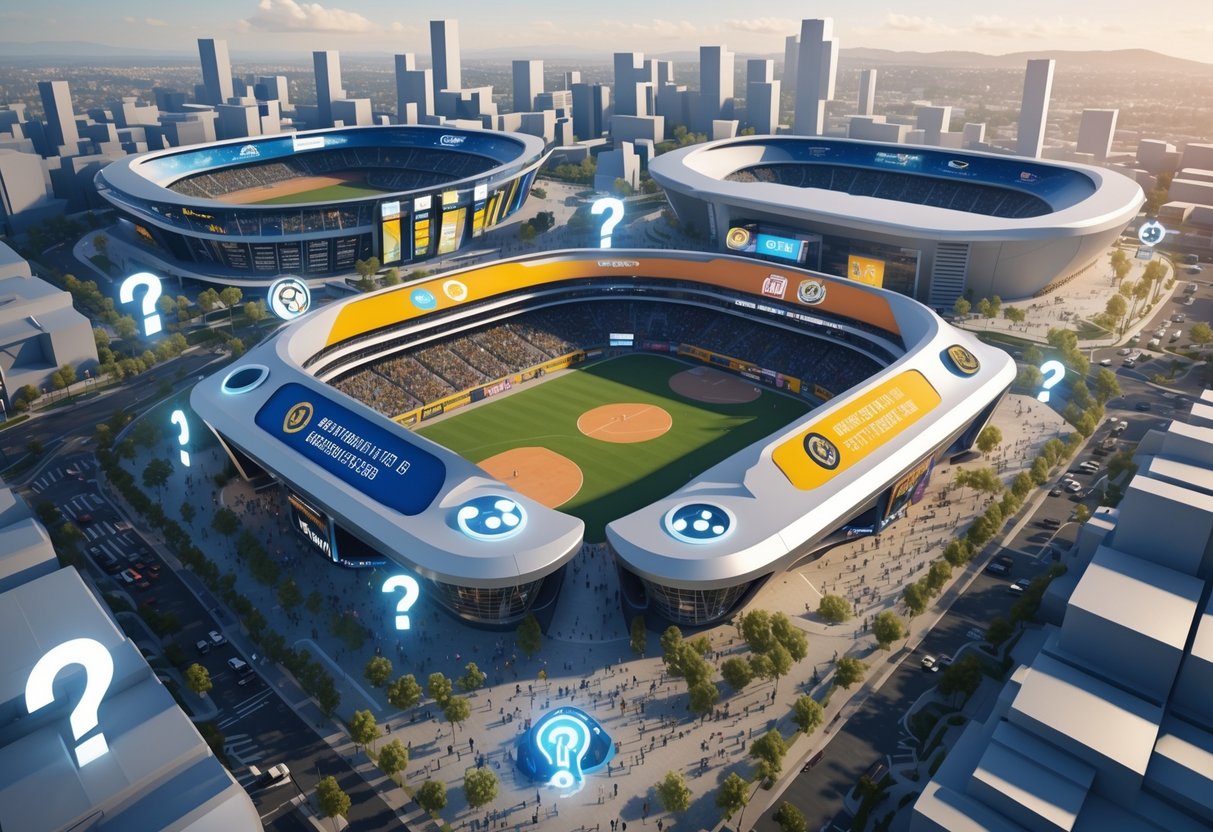
The LEC hasn’t expanded past 10 teams yet, though industry insiders keep saying it’s just a matter of time. Most talk centers on adding two more teams for a 12-team format, but there’s no official timeline.
Which teams have recently joined the LEC as part of its expansion?
No new teams have joined the LEC through expansion lately. The league still runs with the same 10 franchised teams as always.
Any roster moves only involve current orgs swapping players or staff, not adding new franchises.
If expansion happens, it’ll probably mean two more teams for a 12-team league. But right now, that’s just speculation—nothing official from Riot.
How will the new teams alter the dynamics of the upcoming LEC season?
Since there aren’t any new teams, nothing’s changed for the upcoming season. The same 10 orgs play under the same formats.
Riot has made some structural tweaks for 2025. These changes should make matches more competitive and give teams more international chances.
Current orgs keep things interesting with roster shuffles and new strategies, so the league still feels fresh without needing expansion.
Can you tell us about any emerging talents within the newly added LEC teams?
We can’t, because there aren’t any new teams in the LEC yet. The league sticks with its 10 franchised orgs.
Emerging talent still finds its way into the LEC through the usual channels. Regional leagues across Europe, the Middle East, and Africa feed new players into the system.
Teams keep scouting the national leagues and academy setups for fresh prospects. That pipeline works, even without adding more teams.
What are the origins of the latest teams to enter the LEC fray?
No teams have joined recently via expansion. The same 10 franchised orgs have held their spots since the franchise system kicked off.
The LEC grew out of the old EU LCS format. Back then, orgs applied for franchise slots instead of qualifying through promotion.
Any “new” presence comes from rebrands or ownership changes, not actual new teams. The number of slots hasn’t gone up.
How has the addition of new teams changed the format of the LEC competition?
The LEC format hasn’t changed because of team additions—there haven’t been any. Any format changes come from Riot’s tweaks to keep things interesting.
Recent updates focus on more exciting matches and international opportunities. These changes affect how current teams compete, not how many teams there are.
The 2025 season brings in some new structures for better competition, but it all happens within the same 10-team system the LEC’s used for years.
What strategies are the LEC expansion teams using to integrate into the league?
Right now, there aren’t any expansion teams in the LEC, so we can’t really look at what they’re doing to fit in. The league still runs with its usual ten franchised organizations.
Whenever expansion finally happens, new teams will probably need to come up with solid integration plans. They’ll have to build competitive rosters and find ways to connect with fans.
Setting up strong operations will matter too. Some potential teams might take notes from other regional leagues that have managed to add new organizations successfully.
Still, until expansion actually happens, it’s all just speculation.


